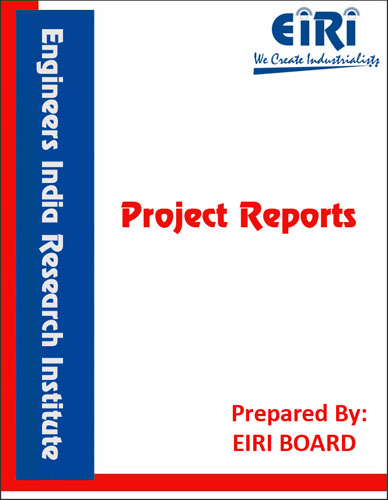The project report includes Present Market Position and Expected Future Demand, Market Size, Statistics, Trends, SWOT Analysis and Forecasts. Report provides a comprehensive analysis from industry covering detailed reporting and evaluates the position of the industry by providing insights to the SWOT analysis of the industry.
Tyres and tubes, the strategic rubber products and basic supplements to the automotive vehicles are of most importance to the country’s economy. The tyre industry sector is providing direct empolyment to over 40,000 people and indirect empolyment to lakhs of people. This industry sector is now being considered as a core industry sector.
The manufacturing of automobile tyres as an essential ancillary for the development of automobile sector came into being in India during 1930’s when the Dunlop India Ltd, the first tyre manufacturing transnational company started its operation in 1935 at Sahaganj in West Bengal.
Today, one cannot imagine a world without automobiles even though India has a large network of railway lines, considering the vastnes of the country and the thrust given for balanced development, road transport would have decisine role to play in the coming years. Vehicle would become more and more part of not only the commercial like but even the personal like.
The Indian tyre and tube industry has been continuously in the process of up gradation of product quality to satisfy the requirements of Indian automotive manufactures, users of automobiles and the road conditions prevailing in the country. Various developments have taken place in design of tyres especially for passenger cars, light trucks, trucks and buses involving tyre construction, strength, sizes, tread design, rubber compounding etc. The pace of development of tyres in the country has also been hastened by the requirements of new passenger car and light truck manufactures and for export, which require higher accuracies, better uniformity longer life etc.
Most steel belted radial passenger and light truck tires are composed of an inner liner, two polyester reinforced body plies, two steel beads, two bead reinforcing strips, two anti-chafing strips, two steel belts, with belt edge wedges or wrap around gum strips, the sidewalls, and the tread. Many tires also include one or two layers of nylon or polyester constricting belts or strips over the steel belts (safety belts or cap plies).
The most common failure mode of steel belted radial passenger and light truck tires is separation between the steel belt components. This area is subject to the highest amount of stress during normal use and is also the area of weakest potential adhesion because of the difficulty of bonding rubber to metal and the mechanical stress at the belt edges. The adhesion can be adversely affected by various manufacturing practices including, but not limited to, under-curing, contamination, and improper storage and handling of tire components. For example, if any moisture is allowed to accumulate on steel belt wire or between the steel belts, degradation of the steel wire components or pockets of separation may occur. Similarly, small pockets of air between the steel belts may result in a breakdown of adhesion. Less common, but sometimes present, are foreign materials cured within the tire such as small pieces of metal, wood, or other contaminants. Contamination found in cured tires has varied widely, including perspiration, chicken bones, a live shotgun shell, a wrench, a glove, timecards, screws, etc.
INTRODUCTION
BUREAU OF INDIAN STANDARDS
LABORATORY TESTING OF TIRE COMPOUND
COMPONENTS OF TYRES
PROPERTIES AND CHARACTERISTICS OF RADIAL TYRES
RAW MATERIALS
DETAILS OF COMPONENTS IN TYRE BUILDING
MARKET SURVEY
OVERVIEW OF TYRE INDUSTRY IN SRI LANKA
PRESENT MANUFACTURERS/EXPORTERS OF RADIAL TYRE
TECHNICAL KNOW – HOW
FOREIGN COLLABORATIONS
MANUFACTURING PROCESS OF RADIAL TYRES
PROCESS FLOW DIAGRAM OF RADIAL TYRE
PROCESS IN DETAILS
DIFFERENT OPERATION IN RADIAL TYRE MANUFACTURING
PASSENGER CAR TYRE FORMULATION (RADIALS)
TRUCK TYRE FORMULATION (STEEL RADIAL)
FORMULATION OF TYRES COMPOUNDS
RECIEPES FOR AUTOMOBILE BEAD WIRE
POST MANUFACTURING METHOD FOR RADIAL TYRES
SUPPLIERS OF PLANT AND EQUIPMENTS (GLOBAL)
SUPPLIERS OF PLANT AND EQUIPMENTS
SUPPLIERS OF RAW MATERIALS
PRINCIPLES OF PLANT LAYOUT
PLANT LOCATION FACTORS 82
EXPLANATION OF TERMS USED IN THE PROJECT REPORT
PROJECT IMPLEMENTATION SCHEDULES
DETAILS OF MACHINERY
COMPOSITION OF PASSENGER TYRE
RAW MATERIALS CALCULATION
APPENDIX – A :
1. COST OF PLANT ECONOMICS
2. LAND & BUILDING
3. PLANT AND MACHINERY
4. FIXED CAPITAL INVESTMENT
5. RAW MATERIAL
6. SALARY AND WAGES
7. UTILITIES AND OVERHEADS
8. TOTAL WORKING CAPITAL
9. COST OF PRODUCTION
10. PROFITABILITY ANALYSIS
11. BREAK EVEN POINT
12. RESOURCES OF FINANCE
13. INTEREST CHART
14. DEPRECIATION CHART
15. CASH FLOW STATEMENT
16. PROJECTED BALANCE SHEET



